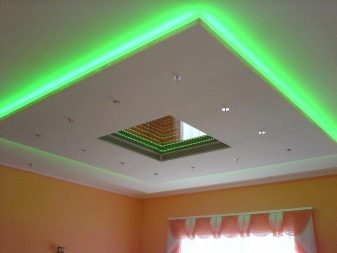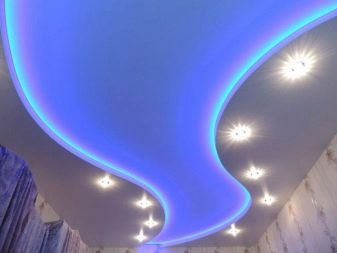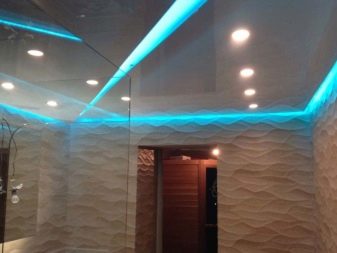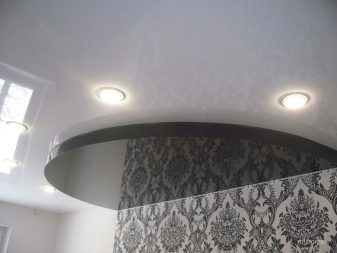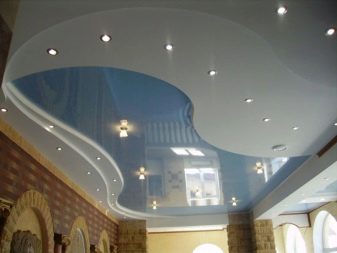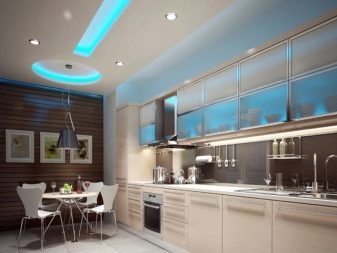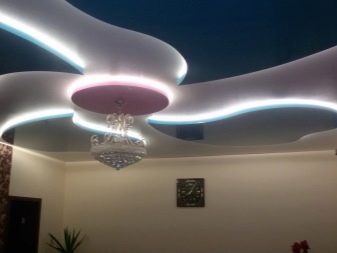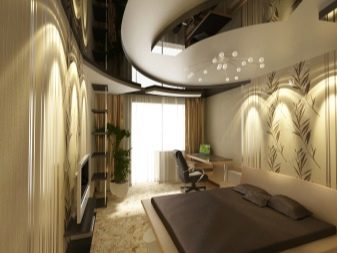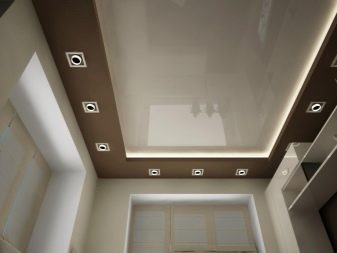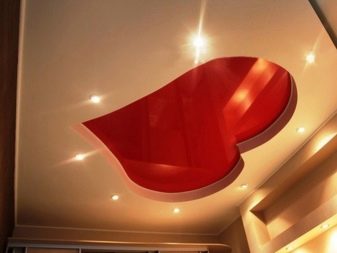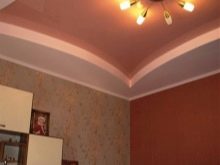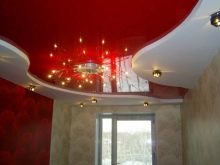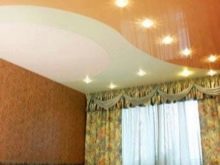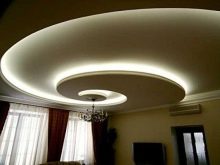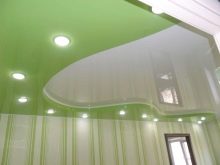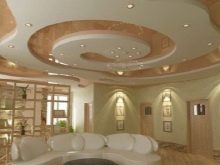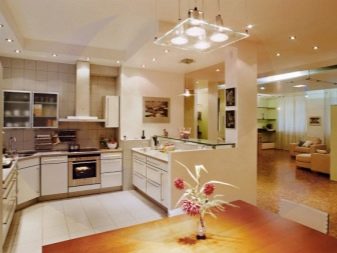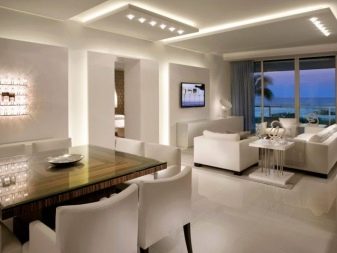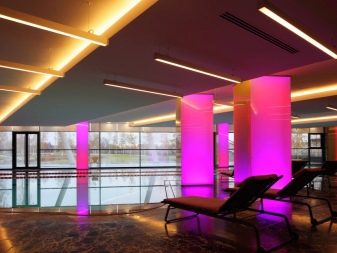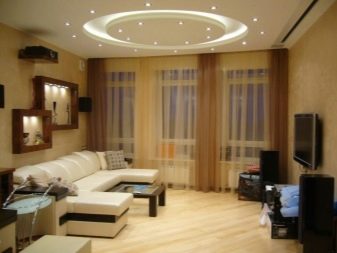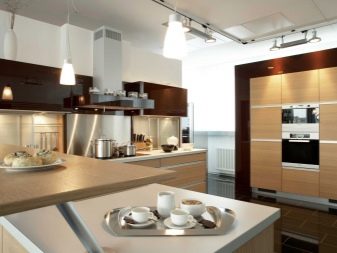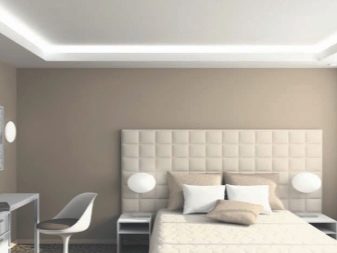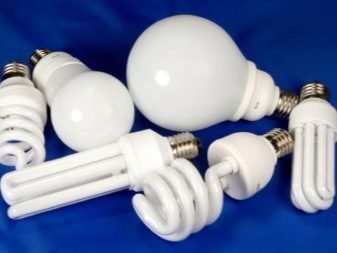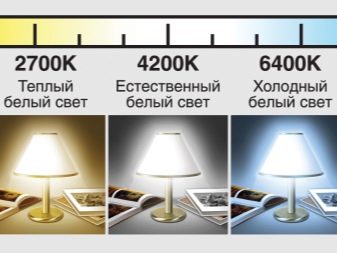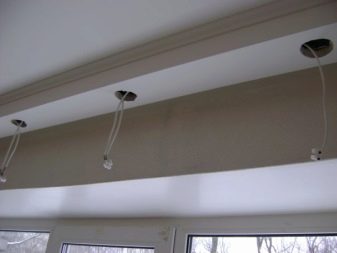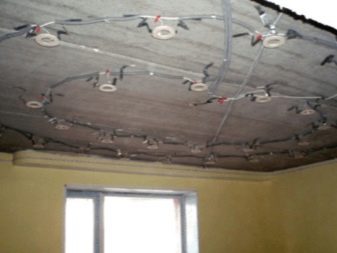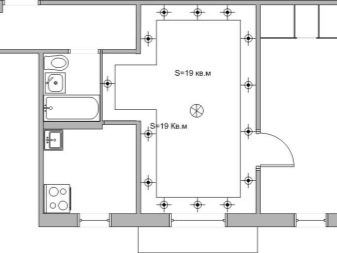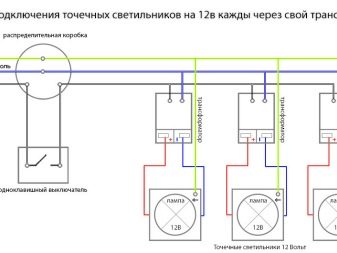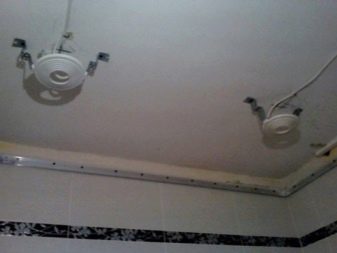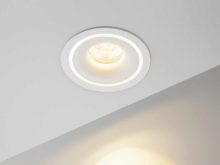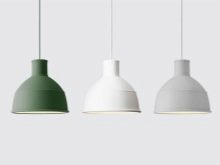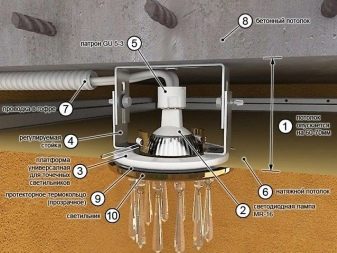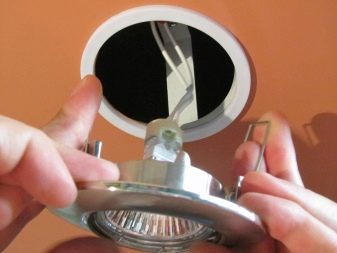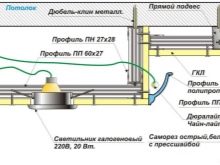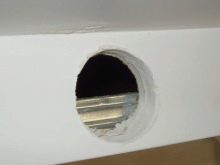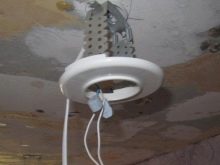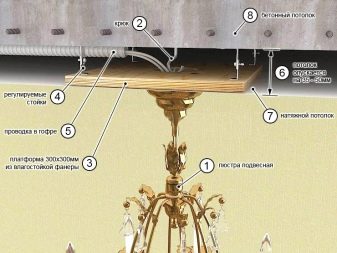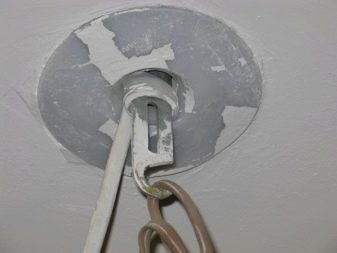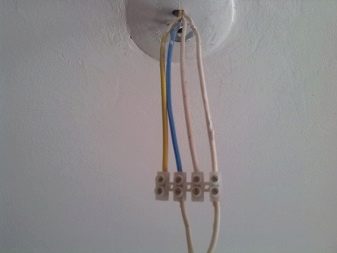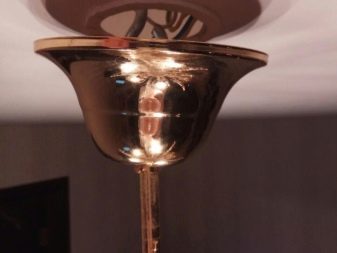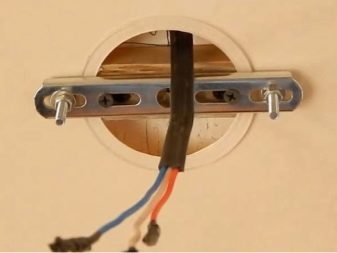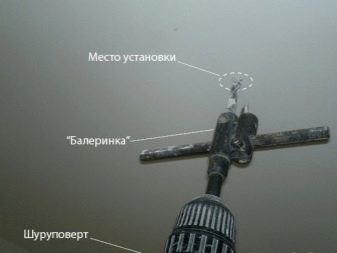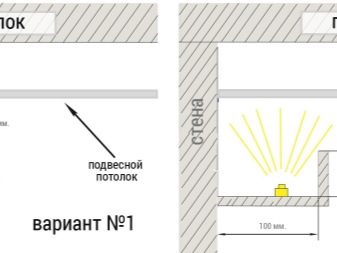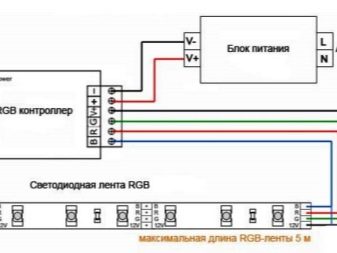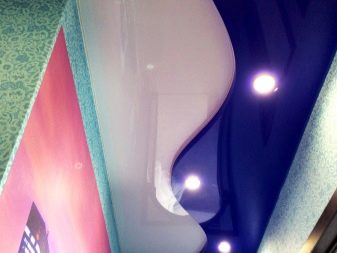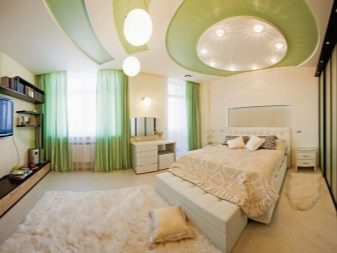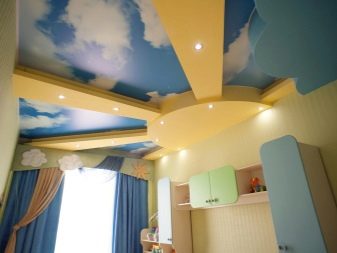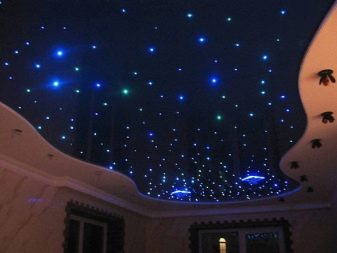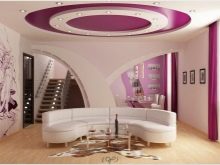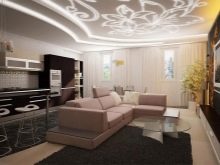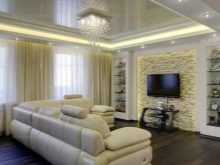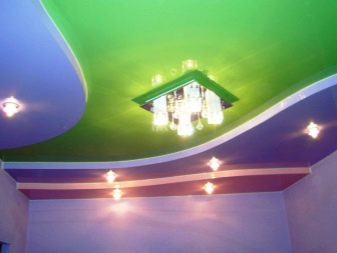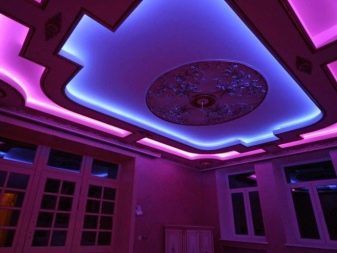Two-level ceilings with lighting: their device, the pros and cons
In an effort to stand out, people often look for non-standard solutions. In particular, this also applies to the design of ceilings - the structures are complicated, they use different types of lighting devices. However, before you choose one or another option, you need to carefully consider all the pros and cons of each of them.
Advantages and disadvantages
Two-level ceiling with lighting - one of the options for three-dimensional structures, the hallmark of which is the height difference.
Compared with the traditional design of the ceiling, two-level designs with built-in lamps have several advantages:
- originality;
- space for design solutions (except for lighting, decor elements can be the form of structures, images, perforation, etc.);
- masking irregularities, ventilation passages, cables, wires, fixtures for lamps;
- the ability to install additional light sources;
- division of the room into functional zones.
The disadvantages of this design include:
- high cost;
- reduction of the volume of the room with each additional tier (therefore, this option provides a height of at least 2.5 meters).
Kinds
The form of any of the tiers of the structure can be:
- rectilinear (square, rectangular);
- curvilinear (round, oval or arbitrary).
The lower level can overlap the upper one in varying degrees (go slightly on its edges, close a large part of it, or even cross it across). It all depends on the desired concept of the interior, the designer’s imagination, financial and technical capabilities.
All bunk ceilings with the ability to install lamps can be divided into three types:
- Suspended. Their basis is the framework from metal. It is usually sheathed with plasterboard (less commonly used plastic, aluminum, wood).The undoubted plus of this type is environmental friendliness, the disadvantages are laborious installation and complexity of the design.
- Stretch. In them, instead of solid materials using polymer canvas. This ceiling does not need painting, may have a matte or glossy surface. The color range is also diverse.
- Combined. Such designs combine two materials.
What lamps can be used
Artificial lighting is divided into:
- general (central) - covers the entire room;
- zone - intended for part of the room;
- decorative - used to decorate the room, turned on temporarily;
- mixed (for convenience, it can be equipped with a remote control system).
Luminous flux can be:
- directional (to highlight an object, give volume, create light effects);
- reflected (scattered).
Lighting devices can be on both levels, on one, or between them. The main element of any lighting device is a lamp. They can be classified by size, power, energy consumption, shape.
The following types of lamps are distinguished:
- incandescence;
- halogen;
- LED;
- energy saving;
- fluorescent.
They can emit cold, neutral or warm white light.
In addition, a particular shade can be given to the light by applying a spray onto the flask or injecting gas capable of coloring the rays (this applies only to gas-discharge lamps).
If mortise point incandescent lamps are used, the distance between the web of the tension or hanging fabric and the ceiling should not be less than the value of their immersion in a particular material. For incandescent lamps, this figure reaches 12 cm, for halogen lamps - up to 6 cm, for LED lamps - up to 2 cm, for luminescent lamps - up to 8 cm.
Preparation for installation of lighting
Before you begin the installation of fixtures, it is necessary to conduct preparatory activities:
- Estimate the light level in the room. If it is below the level recommended by sanitary norms and rules, it is necessary to increase the number of lighting devices or their power. When assessing light, it is important to consider both artificial and natural light.
- Decide on the location of the lighting.
- In accordance with the task, it is necessary to draw up a schemewhere not only the location of each device will be indicated, but also the wiring system.
- Select the type of electrical wiring according to the room in which it will be used. The bathroom needs special protection from moisture. However, good isolation should be everywhere, because no one is immune from being flooded by neighbors and other unforeseen situations.
- It is necessary to mount the wiring before the web is tensioned or the plates are installed. Up to this point it needs to be checked, because then the flaws can be corrected only by dismantling one or both levels. Do not forget to turn off the power during installation.
- Select the type of mount.
There are three main types of fixtures:
- Overhead. For them, special covers are provided, which are attached directly to the ceiling.
- Embedded. They are inserted into the ceiling so that their surface almost completely merges with the level of the canvas.
- Suspended. Usually these are large lighting fixtures.
There are also lamps that can be installed in a niche. Usually the niche is located in the place of the difference between the levels.
Installation
Installation of two-level ceiling lighting devices is not complicated, but is fraught with certain difficulties, since safety is the main requirement. This applies to the work being carried out, and further operation. It is better to entrust installation to professionals, but to understand the essence of the process, it is worth knowing some nuances.
Recessed fixtures mounted in a plasterboard ceiling are quite simple.
- A hole of the required size is cut in the installed ceiling. The wire must be led outside. Its length should be calculated with a small margin, so that it is more convenient to perform manipulations.
- Wires placed inside a drywall construction with a chuck are connected using a terminal block.
- The lampshade is placed in the hole and secured with clips.
To install these same fixtures in the suspended ceiling, special clamps in the form of rings are required. They are necessary to protect the polymer material.
Pendant lights are mounted differently:
- When installing such fixtures, it is important to calculate the load they have on the ceiling. At the installation sites should be special fasteners to reduce the load.In their absence, the device is attached to the ceiling additionally. In the space between the base ceiling and the canvas set the fastener in the form of a bar, metal plates or special adapters.
- At the stage of preparation of the hole, it is necessary to make a marking on a special protective ring and glue it to the canvas.
- To connect the wires need the help of a second person who will support the chandelier from the bottom.
- The chandelier can be hung in two ways (on the hook by the ring or on the bar with screws). All actions performed on the stretched canvas must be careful, because the material is easily damaged. It is important to control and thermal effects on him. Drywall also requires a careful attitude because of its fragility.
Installation of the overhead lamp is as follows:
- a hole is cut into which the wire is inserted (it must be smaller than the size of the base of the lamp);
- the lath is established;
- wires are connected using a terminal box;
- the wires are laid in the hole, and the lamp housing is screwed to the bar.
Ways of laying diode tape set.The hidden mounting option is safe even for a polymer web, since the tape does not overheat. It also has high flexibility and low energy consumption. For installation, you will need a power supply, a controller and connectors for connecting wires.
The tape is fixed by means of double-sided adhesive tape to the ceiling or walls (depending on the required direction of lighting).
Use cases
Despite some pompousness of two-level ceilings, decorated with different types of lighting, they are appropriate in almost every corner of the house or apartment. Do not think that complex ceiling structures are intended only for spacious rooms. They can be used even in narrow corridors.
In the bedroom with the help of ceiling drops and the placement of built-in lamps you can distinguish between areas for sleeping and working. In the children's room, the ceiling can be a picturesque element of decor. To do this, you can use not only the various fixtures, but also photo printing. And perforation in combination with illumination can create the illusion of a night sky covered with stars.
But the real scope for the application of the ceiling with two tiers can be found in the design of living rooms.Here you can find both strict geometric forms that complement the laconic interior, and asymmetrical smooth lines that continue the intricate outlines of the decoration of walls and furniture, and fancy patterns.
Both levels of construction may have the same color or be different. The snow-white ceiling is universal. It visually expands the space, makes the room brighter.
This effect can be increased several times if you cover in gloss and place the backlight around its perimeter.
Colored ceilings came into vogue relatively recently, but their popularity is growing. They create the appropriate mood and set the tone for the whole situation. If you decide to make the ceiling multicolored, it will definitely be in the spotlight. In addition, color can be not only canvas, but also built-in lights.
How to install a two-level ceiling with lighting, see the following video.

